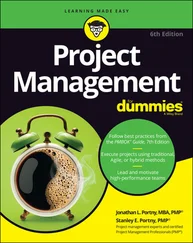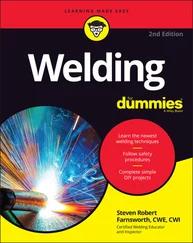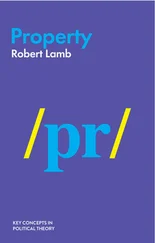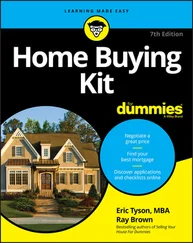Single-family houses and condominiums or townhomes: Most real estate investors start with a rental home, condo, or townhome because these properties are generally the easiest ones to gain experience with. They may be located in a common interest development (CID) or community association in which all the common areas are the association’s responsibility.
Duplexes, triplexes, and fourplexes or subdivided houses: This category includes properties with two to four units. Often, these properties are the first choice for real estate investors who plan to live in one of the units or want to take the next step up from investing in a single-family rental home or condo. These properties qualify for favorable financing terms, so they’re perfect for the new investor or an investor in higher-priced urban markets.
Medium-size multifamily apartment buildings: These buildings usually have between 5 and 30 units; they are best run with part-time to full-time on-site management and regularly scheduled maintenance and contractor visits.
Large multifamily apartment buildings: These properties are larger buildings that can have 30 or more rental units in a single location, or in close proximity on scattered sites, with an on-site manager or maintenance staff. Owning one of these properties is the goal of many real estate investors who look forward to being able to hire a professional property manager and just check their bank account for their regular cash distributions. (In Chapter 3, I reveal what to look for in a good professional property manager.)
No matter what type of residential real estate you’re involved with, you need to understand the basics of property management. You must market or staff a property differently depending on its size and location, but many of the fundamentals are the same regardless.
Over the course of your tenure as a property manager, you’ll probably manage several types of residential properties, which is just one of the challenging yet fulfilling aspects of the job. You may start out managing single-family rental homes or condos, for example, and then see your investments or career progress to larger rental properties. Sometimes, people in the rental housing business start as on-site employees for large rental properties, learn the ropes, and later apply that knowledge to become market dominators of rental houses in their areas.
Owning and managing all types of rental property can be lucrative, so I suggest that you jump in wherever you have your first opportunity, because no rules mandate your starting position.
One of the first and most important lessons I learned when I started in property management more than 40 years ago is that vacant real estate isn’t a very good investment. You need to fill those vacancies and keep them filled with tenants who pay on time. Just try looking in the mirror and telling yourself that all the rent came in last month. I bet you can’t do it without smiling!
Renting your property and retaining your tenants don’t magically happen, of course; those tasks require having a plan and doing a lot of work. But you want to work smart, not just hard. In the following sections, I cover some of the best practices for preparing your rental units, setting your rents, attracting qualified prospects, and closing the sale.
Chapter 4expands on where everything begins: acquiring the rental property. Part 2helps you position your new rental property within the rental market and discover how to find good tenants.
Before you can rent your property, you have to make sure that it’s ready for a tenant to move in. But you can’t simply put up a “For Rent” sign and expect to rent to the first caller; you need to spend some time preparing the property properly. And by some time, I mean a lot.
Relax! Tear up your applications to those reality shows that renovate your fixer-upper for free, because you can prepare your property yourself. Just remember to focus on the inside as well as the outside. Chapter 5shows you the best way to determine what to upgrade and renovate to meet the needs of your target market. I also explain how to ensure that your property’s curb appeal ( exterior appearance) makes potential tenants want to see the inside — not keep driving by or swiping to the left to the next property on the list.
 During this stage, you get to test your decorating-on-a-budget skills because you don’t want to over-improve the property. But if you’re too tight with cash and try to get by with anything less than your best effort, be ready for most of the people who show interest in your rental unit to be the least-qualified prospective tenants. The moral of the story? Don’t be cheap, but do be practical!
During this stage, you get to test your decorating-on-a-budget skills because you don’t want to over-improve the property. But if you’re too tight with cash and try to get by with anything less than your best effort, be ready for most of the people who show interest in your rental unit to be the least-qualified prospective tenants. The moral of the story? Don’t be cheap, but do be practical!
 To get great tenants, you need to guarantee that your rental property compares favorably with other properties in your area and makes that important positive first impression. These days, that first impression often happens online, but it always starts with the exterior of your rental property, which should have a neat and well-maintained appearance, and continues with a clean and inviting interior, with the features and amenities that prospective tenants in your area expect.
To get great tenants, you need to guarantee that your rental property compares favorably with other properties in your area and makes that important positive first impression. These days, that first impression often happens online, but it always starts with the exterior of your rental property, which should have a neat and well-maintained appearance, and continues with a clean and inviting interior, with the features and amenities that prospective tenants in your area expect.
Preparing the unit properly also often requires the use of outside vendors, suppliers, or contractors. What you don’t contract out — tasks such as basic cleaning, maintenance, and painting — you need to do yourself. You also need to know how to perform a careful inspection to make sure that the unit is ready to show. I give you details about how to accomplish all these tasks in Chapter 5.
Knowing how much to charge
Understanding what you can charge your tenants is far from arbitrary. Setting the rent in particular can be tricky — especially if you’ve just spent hours investing your time and sweat in renovating and scouring your rental unit to make it sparkle.
In such cases, you may overestimate the market value of your unit because you have so much personally invested. But your prospects aren’t likely to be impressed that you laid the tile; instead, they’ll quickly point out that the flooring color doesn’t match their furniture. But if you lower the rent $300 per month, they’ll consider taking the unit off your hands, almost as though they’re doing you a favor. You may be able to structure some mutually beneficial rental concessions, but don’t be a pushover.
Many rental property owners are simply too nice. Maybe you’re someone who has trouble bargaining and holding out for the top fair-value dollar. You may be kind of like my mother-in-law, who was a sweet but overly generous woman — especially when it came to yard sales. My wife and I are glad that no one ever offered Rita 50 cents for our car!
In addition to setting the rent, you need to make the following decisions before a tenant moves in:
The amount of the security deposit: Setting security deposits is a function not only of market conditions, but also limitations on the amount you can charge and whether that amount is fully refundable. These restrictions are set by state laws. Determining whether you want to pay your tenants interest on the deposits you hold is also subject to law, but certain advantages can warrant doing so even where not required (especially for long-term tenants). The best way to decide on all the details of the security deposit is to conduct market surveys to see what others are doing. If everyone else has security deposits set at approximately half of a month’s rent, requiring your new tenants to come up with a security deposit of two full months’ rent on move-in is difficult.
Читать дальше

 During this stage, you get to test your decorating-on-a-budget skills because you don’t want to over-improve the property. But if you’re too tight with cash and try to get by with anything less than your best effort, be ready for most of the people who show interest in your rental unit to be the least-qualified prospective tenants. The moral of the story? Don’t be cheap, but do be practical!
During this stage, you get to test your decorating-on-a-budget skills because you don’t want to over-improve the property. But if you’re too tight with cash and try to get by with anything less than your best effort, be ready for most of the people who show interest in your rental unit to be the least-qualified prospective tenants. The moral of the story? Don’t be cheap, but do be practical! To get great tenants, you need to guarantee that your rental property compares favorably with other properties in your area and makes that important positive first impression. These days, that first impression often happens online, but it always starts with the exterior of your rental property, which should have a neat and well-maintained appearance, and continues with a clean and inviting interior, with the features and amenities that prospective tenants in your area expect.
To get great tenants, you need to guarantee that your rental property compares favorably with other properties in your area and makes that important positive first impression. These days, that first impression often happens online, but it always starts with the exterior of your rental property, which should have a neat and well-maintained appearance, and continues with a clean and inviting interior, with the features and amenities that prospective tenants in your area expect.










